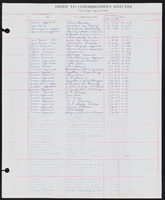Search the Special Collections and Archives Portal
Search Results
Las Vegas City Commission Records
Identifier
Abstract
The Las Vegas City Commission Records (1911-1960) is comprised of bound and unbound materials from the original Las Vegas City Commission. Twelve of the bound volumes are minutes that served as the official record of the proceedings of all Las Vegas City Commission meetings from 1911-1960. There are also three volumes of City of Las Vegas ordinances dating from 1911 to 1958, one volume of legal documents from 1944-1945 and two large volumes containing an alphabetical subject index to the topics covered in the minutes. Unbound materials cover the period 1921 to 1946 and include minutes, resolutions, ordinances, correspondence, financial records, proclamations and other documents related to city business. They provide a valuable historical record of a wide variety of business and community activities in Las Vegas in the first fifty years of its incorporation.
Archival Collection
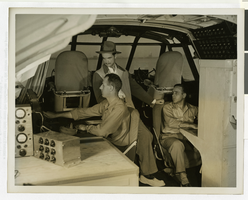
Photograph of Howard Hughes and pilots in the cockpit of the Flying Boat, November 1, 1947
Date
Archival Collection
Description
Image
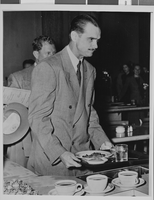
Photograph of Howard Hughes at hearing, Washington, D.C., November 08, 1947
Date
Archival Collection
Description
Description given with photo: "Howard Hughes Carries His Lunch Tray Cafeteria Style - Washington, D.C. Howard Hughes is shown selecting his luncheon cafeteria style during a short recess of the Senate investigation of his wartime plane contracts. Along with Thomas A. Slack, his counsel, the millionaire plane builder had his luncheon in the cafeteria of the Senate office building, while Senator Homer Ferguson, (R) Michigan the Sub-Committee Chairman, called the recess due to the absence of the witnesses summoned to the inquiry at Hughes' request. 11/8/47."
Image
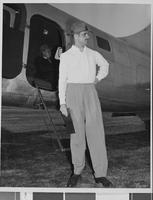
Photograph of Howard Hughes, Terminal Island, California, November 02, 1947
Date
Archival Collection
Description
Image
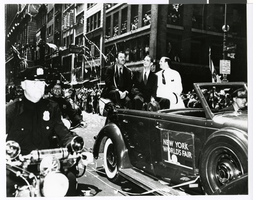
Photograph of Howard Hughes at the New York World's Fair, 1939-1940
Date
Archival Collection
Description
Image
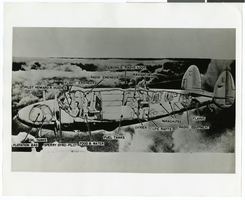
Photograph of a diagram showing the Lockheed 14 aircraft, June 10, 1938
Date
Archival Collection
Description
Image
United Artists film audit and distribution returns report, 1938 March 29
Level of Description
Archival Collection
Collection Name: Howard Hughes Film Production Records
Box/Folder: Box 092 (Restrictions apply)
Archival Component
Prospectus for the Lightning Creek Mine, Wingdam, British Columbia, approximately 1937 to 1938
Level of Description
Archival Collection
Collection Name: Howard Hughes Film Production Records
Box/Folder: Box 520 (Restrictions apply)
Archival Component
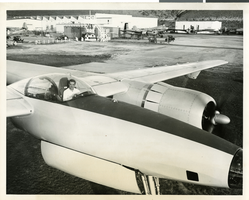
Photograph of Howard Hughes in the XF-11, after his successful test flight, April 5, 1947
Date
Archival Collection
Description
Image

